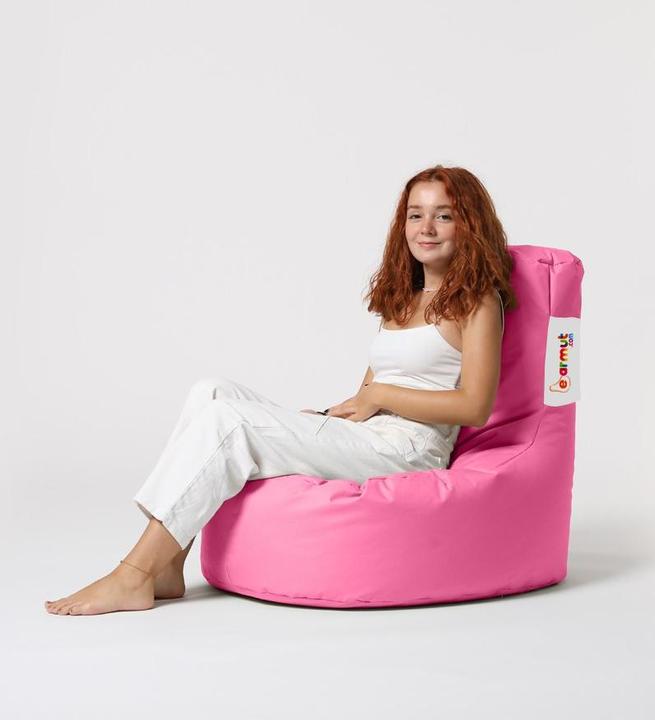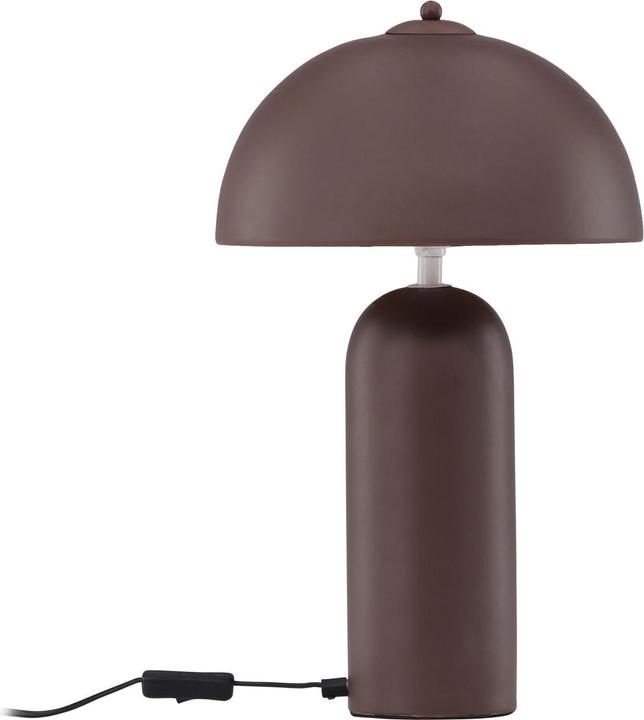

The true inventors behind these iconic designs and their replicas
Reinventing the wheel is difficult – and rarely worthwhile. As a result, many designs often reference others. I think it’s good to know when that happens. That’s why, in this series of articles, I’ll be showcasing furniture classics and the spin-offs they’ve inspired. You’ll find the latter in our range.
Any student wishing to take Takeshi Sunaga’s classes has to sign a declaration that reads «all ideas are free»(*). The Japanese professor, who teaches Information Design at Tama University of the Arts (TAU) in Tokyo, is convinced designers can and should be allowed to incorporate and build upon other people’s ideas as part of the creative process. All that’s off limits are brazen copy-paste attempts.
If you ask me, exactly the same thing applies to product design. It’s perfectly legitimate to take a basic idea for a new design and flesh it out. Even some of the most iconic pieces of furniture of the 20th century were spin-offs of an existing design. After doing a little digging, I’ve penned a series of articles on famous designs and their imitations – the latter of which you’ll find in our range. That way, the next time you buy a piece of furniture or a lamp, you’ll know where the inspiration for it came from. You can then make a conscious decision whether to take the dupe or go with an original.
1. S 32
- Designer: Marcel Breuer
- Manufacturer: Thonet
- Created: 1929/30
- Made in: Germany
- Value: approx. 900 euros

Source: Pia Seidel
Marcel Breuer actually designed the chrome-plated, tubular steel S 32 chair in 1928. However, production of the chair didn’t start until Thonet, a German family business, took on the project in 1930. The design was seen as innovative because it combined tubular steel with the bentwood furniture Thonet typically made. While the solid wood and wickerwork of the seat and backrest embodied tradition, the frame represented the present and future. The idea for the chair’s shape was revolutionary too. This time, it was Ludwig Mies van der Rohe behind the concept. He was the man awarded the first cantilever patent for the MR 10 and MR 20 chair models in 1927 (website in German). All Marcel Breuer did to the S 32 was improve its elasticity. This, as well as its contrasting style, have led to the chair being referenced in other designs countless times over the years. The furniture brand Pfister currently has a similar model in its range. Look a little closer, however, and you’ll see the differences. Namely, that the screws aren’t as subtly or elegantly positioned as they are on the original.

2. Stool 60
- Designer: Alvar Aalto
- Manufacturer: Artek
- Created: 1932–33
- Made in: Finland
- Value: approx. 250 euros

Source: Pia Seidel
Alvar Aalto’s Stool 60 has been produced continuously, in almost the same form, since 1933. The stool can be used as a seat, table or storage surface and is distinguished by its curved legs. These make it both stackable and visually appealing. The original Stool 60 design is made of birch wood. Nowadays, you can find the stool with various different seat cushions, including leather, upholstery and linoleum. Tap by Normann Copenhagen looks suspiciously similar to the linoleum version. The only difference is that the legs are connected to the sides of the seat, not the bottom.
3. B.K.F. Chair / Hardoy Chair, Butterfly Chair
- Designers: Antonio Bonet, Juan Kurchan and Jorge Ferrari-Hardoy
- Manufacturer: Knoll
- Created: 1938
- Made in: Originally Argentina
- Value: approx. 670 euros

The B.K.F. Chair / Hardoy Chair, Butterfly chair consists of two curved, intersecting steel loops that are welded together, as well as a butterfly-shaped piece of leather. Folded up, the chair hardly takes up any space. Unfolded, it offers the comfort of an armchair that wraps you up like a caterpillar in a cocoon. Its rather lengthy name comes from the first letter of each inventor’s surnames: Antonio Bonet, Juan Kurchan and Jorge Ferrari-Hardoy, who co-founded Grupo Austral in Buenos Aires in 1938. The Butterfly chair was their official proposal for a redesign of a wooden folding chair popular in the 19th century, which, according to Vitra was initially only used «for military purposes, camping and travelling circuses in England and the United States» (website in German). Originally made in Argentina, the Butterfly chair is now available from other companies in the furniture business, including Knoll, which manufactures goods in Germany. Although VidalXL isn’t an official manufacturer, it does sell a similar folding chair design. However, its metal bars are slightly thicker than on the original Butterfly chair.
4. Le Klint 101 Lantern
- Designer: Kaare Klint
- Manufacturer: Klint
- Created: 1944
- Made in: Denmark
- Value: approx. 500 euros

Source: Pia Seidel
Le Klint 101 Lantern designed by Kaare Klint is the perfect combination of design, technology and craft. In addition to paper, it’s still composed of a filigree foil made of recyclable PVC plastic, free of any harmful plasticisers. Since the lampshade is enclosed and the material is semi-transparent, Le Klint 101 Lantern gives off glare-free light. This makes it perfect for high ceilings. The pendant light became known primarily for its elegant folds, which made it a popular movie prop. It appeared in a bedroom in the film Let’s Make Love starring Marilyn Monroe. Le Klint 101 Lantern is now also available in a modified form as a table- or floor lamp. Stockists include other Scandinavian brands, including Nordlux.
5. Sacco
- Designers: Gatti, Paolini and Teodoro
- Manufacturer: Zanotta
- Created: 1968
- Made in: Italy
- Value: approx. 370 euros

Source: Pia Seidel
Three young Italian architects (Piero Gatti, Cesare Paolini and Franco Teodoro) set out to design a chair that’d adapt to body shapes. A seat that’d feel like sinking into a snowdrift. They ended up creating Sacco, a beanbag filled with polystyrene beads that’s considered the «world’s first beanbag». The seat’s light weight and flexibility meant it quickly became a success. It can either complement a sofa arrangement or, because of its sculpture-style look, be positioned in open space – both indoors and outdoors. That’s why this versatile chair is referenced by brands such as Atelier del Sofa, who give it an adapted silhouette and different content. If you want the original, it’s available from the traditional-steeped Italian company Zanotta. The firm has been selling the chairs ever since they were brought to market. Nowadays, the polystyrene (EPS) contents have been replaced by a biobased polyester (PLA). The cover is made of Econyl, a recycled plastic.
6. Ultrafragola
- Designer: Ettore Sottsass
- Manufacturer: Poltronova
- Created: 1970
- Made in: Italy
- Value: approx. 10,000 euros

Source: Pia Seidel
Ultrafragola is a mirror lamp designed by Ettore Sottsass. The Italian brand Poltronova still make it today. While the design may not be hot off the presses, it’s currently celebrating a renaissance. When it’s switched off, the frame appears opal white. Flip on the light and the frame glows neon pink. Since the pandemic, the showiness of the mirror lamp has led it to pop up in countless Instagram mirror selfies, including those of celebrities such as Bella Hadid and Frank Ocean. The comeback may have something to do with the renewed interest in Memphis design. Sottsass founded the Memphis Group design collective, which later became known for its swirling, abstract forms, in 1981. Although the free-standing mirror was created before that, its frame, which is intended to resemble long, wavy hair, fits in with the collective’s aesthetic. Today, Ultrafragola comes with LEDs instead of neon tubes, and is rarely replicated exactly. The frame is the only part that frequently serves as a source of inspiration for eclectic mirrors. Examples include Beliani’s Lacs model or Curvy Mirror by Gustav Westman.
7. Atollo 233
- Designer: Vico Magistretti
- Manufacturer: Oluce
- Created: 1977
- Made in: Italy
- Value: approx. 800 euros

Source: Pia Seidel
Over the years, Apollo 233, the dimmable Oluce lamp designed by Vico Magistretti, has developed into the archetype of a table lamp. Though composed of simple geometric shapes (a cylinder, a cone and a hemisphere), it’s still very aesthetic, which has catapulted it back into fashion. The reason? It’s shaped like a mushroom or, with a little imagination, a jellyfish, which Pinterest says will be on trend in 2024. The original design is available in several versions: black or white Murano glass, satin-finished bronze and brass. The Corello model designed by Venture Home, made of brown spraystone, is a dead ringer for it.
(*) As stated by Ingmar Thies on Sven Saro’s podcast «Ohne den Hype» (in German).
Like a cheerleader, I love celebrating good design and bringing you closer to everything furniture- and interior design- related. I regularly curate simple yet sophisticated interior ideas, report on trends and interview creative minds about their work.










